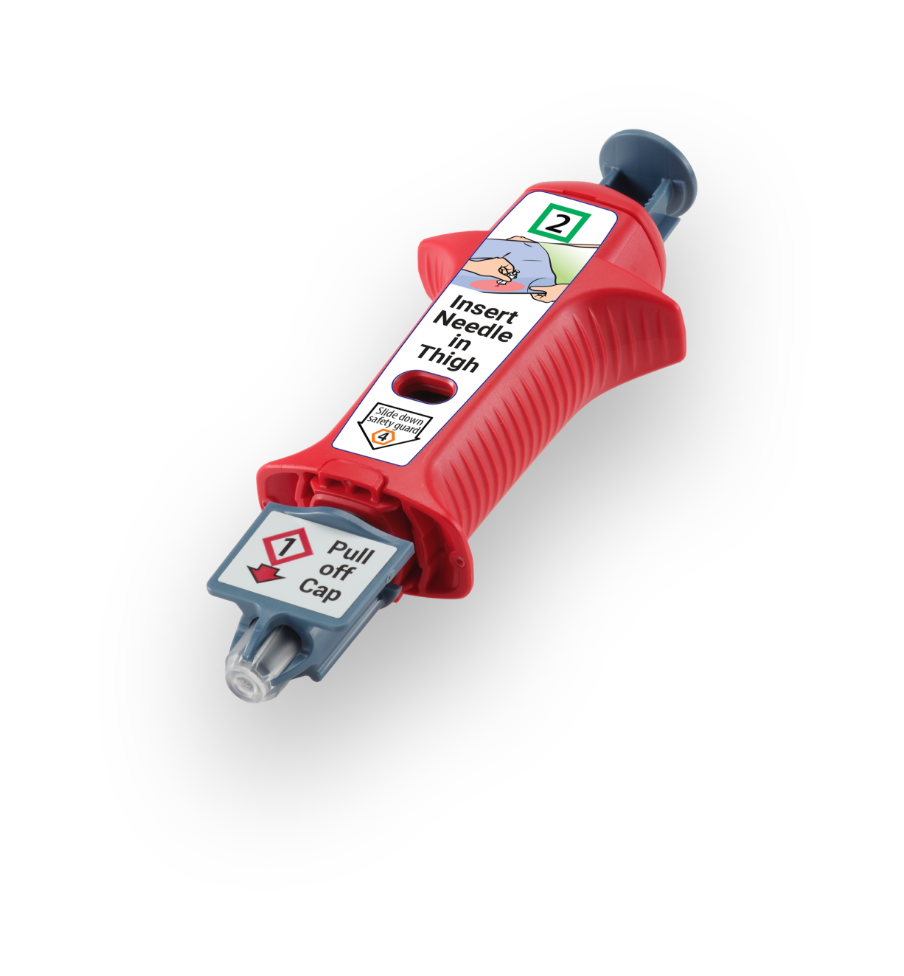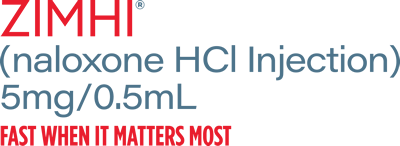Here are some examples of legal (when prescribed) and illegal opioids2:
- Prescription: Morphine, codeine, oxycodone, hydrocodone, hydromorphone, oxymorphine, methadone, tramadol, and fentanyl
- Illegal: Heroin and fentanyl (when not prescribed)
An opioid overdose emergency is what happens when there is too high of an opioid dose in the body at one time.3
If someone is having an opioid overdose emergency, their breathing may slow or stop. If this happens, the brain may not get enough oxygen.4,5


Opioids (opiates) are a type of drug used to treat pain. A doctor may prescribe them after surgery or for a serious injury. Opioids are also used to help people who live with pain every day, such as some cancer patients.1 There are also illegal opioids.
Here are some examples of legal (when prescribed) and illegal opioids2:
- Prescription: Morphine, codeine, oxycodone, hydrocodone, hydromorphone, oxymorphine, methadone, tramadol, and fentanyl
- Illegal: Heroin and fentanyl (when not prescribed)
An opioid overdose emergency is what happens when there is too high of an opioid dose in the body at one time.3
If someone is having an opioid overdose emergency, their breathing may slow or stop. If this happens, the brain may not get enough oxygen.4,5
WHAT DOES AN OPIOID OVERDOSE
EMERGENCY LOOK LIKE?
SOME SIGNS OF AN OPIOID OVERDOSE EMERGENCY ARE6
PALE,
CLAMMY SKIN
![]()
BLUE OR PURPLE
FINGERNAILS OR LIPS
![]()
THROWING UP OR MAKING
GURGLING NOISES
![]()
NOT BEING
ABLE TO SPEAK
![]()
NOT MOVING (PERSON MAY LOOK
ASLEEP, BUT CAN’T BE WOKEN UP)
![]()
WHAT DOES AN OPIOID OVERDOSE EMERGENCY LOOK LIKE?
SOME SIGNS OF AN OPIOID OVERDOSE EMERGENCY ARE6
PALE,
CLAMMY SKIN![]()
BLUE OR PURPLE
FINGERNAILS OR LIPS
![]()
THROWING UP OR MAKING
GURGLING NOISES
![]()
NOT BEING
ABLE TO SPEAK
![]()
NOT MOVING (PERSON MAY LOOK ASLEEP, BUT CAN’T BE WOKEN UP)
![]()
WHY ZIMHI?
4 SIMPLE STEPS TO USE ZIMHI
ORDER ZIMHI
In an opioid overdose emergency,
ZIMHI MAY MAKE ALL
THE DIFFERENCE


In an opioid overdose emergency,
ZIMHI MAY
MAKE ALL THE
DIFFERENCE


In an opioid overdose emergency,
ZIMHI MAY
MAKE ALL THE
DIFFERENCE
References: 1. Centers for Disease Control and Prevention. Drug overdose deaths. Updated August 27, 2017. Accessed November 30, 2021.
https://www.cdc.gov/drugoverdose/opioids/prescribed.html 2. Commonly Used Terms. Centers for Disease Control and Prevention. Updated January 26, 2021. Accessed December 23, 2021. https://www.cdc.gov/opioids/basics/terms.html 3. UCONN Health. Pain pills/opioids frequently asked questions. Accessed October 28, 2020. https://health.uconn.edu/poison-control/about-poisons/medications/information-for-people-using-pain-pills-or-other-opioids/pain-pillsopioids-frequently-asked-questions/ 4. Opioid overdose. SAMHSA. Updated August 19, 2020. Accessed November 30, 2021. https://www.samhsa.gov/medication-assisted-treatment/medications-counseling-related-conditions/opioid-overdose 5. Dane W, Fahel D, Epley T. The solution to opioids is treatment. Brain Injury Association of America; 2020. 6. Medline Plus. Opioid overdose. Updated June 3, 2021. Accessed November 30, 2021. https://medlineplus.gov/opioidoverdose.html
INDICATION
ZIMHI is a prescription medicine used in adults and children for the treatment of an opioid emergency, such as an overdose or a possible overdose with signs of breathing problems and severe sleepiness or not being able to respond. ZIMHI is to be given right away by a caregiver and does not take the place of emergency medical care. Get emergency medical help right away after the first dose of ZIMHI, even if the person wakes up.
IMPORTANT SAFETY INFORMATION
Do not use ZIMHI if you are allergic to naloxone hydrochloride or any of the ingredients in ZIMHI.
ZIMHI is used to temporarily reverse the effects of opioid medicines. The medicine in ZIMHI has no effect in people who are not taking opioid medicines.
Use ZIMHI right away if you or your caregiver think signs or symptoms of an opioid emergency are present, even if you are not sure, because an opioid emergency can cause severe injury or death.
Family members, caregivers, or other people who may have to use ZIMHI in an opioid emergency should know where ZIMHI is stored and how to give ZIMHI before an opioid emergency happens.
Get emergency medical help right away after using the first dose of ZIMHI. Rescue breathing or CPR may be given while waiting for emergency medical help.
The signs and symptoms of an opioid emergency can return within several minutes after ZIMHI is given. If this happens, give additional injections using a new ZIMHI prefilled syringe every 2 to 3 minutes and continue to closely watch the person until emergency help is received.
ZIMHI may cause serious side effects, including sudden opioid withdrawal symptoms, which may include: body aches, fever, sweating, runny nose, sneezing, goose bumps, yawning, weakness, shivering or trembling, nervousness, restlessness or irritability, diarrhea, nausea or vomiting, stomach cramping, increased blood pressure, or increased heart rate.
Other common side effects of ZIMHI include dizziness and injection site redness.
In infants under 4 weeks old who have been receiving opioids regularly, sudden opioid withdrawal may be life-threatening if not treated the right way. Signs and symptoms include: seizures, crying more than usual, and increased reflexes.
These are not all of the possible side effects of ZIMHI. Call your doctor for medical advice about side effects.
To report SUSPECTED ADVERSE REACTIONS, call 1-800-230-3935 or FDA at 1-800-FDA-1088 or www.fda.gov/medwatch.
IMPORTANT SAFETY INFORMATION and INDICATION for ZIMHI™
As the duration of action of naloxone hydrochloride is shorter than many opioids, keep the patient under continued surveillance and administer repeated doses of naloxone using a new ZIMHI device, as necessary, while awaiting emergency medical assistance.
Reversal of respiratory depression caused by partial agonists or mixed agonists/antagonists, such as buprenorphine and pentazocine may be incomplete. Repeat doses of ZIMHI may be required.
IMPORTANT SAFETY INFORMATION and INDICATION for ZIMHI™


